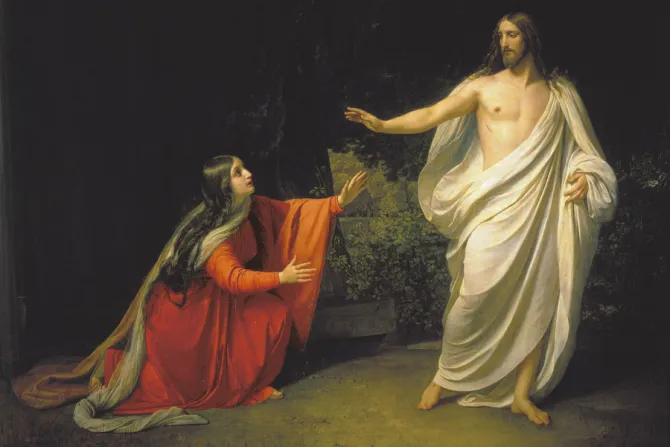Vatican City, Jul 22, 2016 / 02:57 am
Faithful to the wish of Pope Francis, a new decree has bumped the liturgical celebration honoring St. Mary Magdalene from a memorial to a feast, putting her on par with the apostles.
The reason, according to Archbishop Arthur Roche, is that she "has the honor to be the first witness of the Lord's resurrection."
"She is the witness to the risen Christ and announces the message of the Lord's resurrection just like the rest of the Apostles," he said, explaining that for this reason "it is right that the liturgical celebration of this woman should have the same rank of Feast as that given to the celebration of the Apostles in the General Roman Calendar."
Archbishop Roche is secretary of the Vatican's Congregation for Divine Worship and the Discipline of the Sacraments. He issued a letter on the decision June 10, the same day as the decree officiating the decision was published.
Calling Mary Magdalene "an example and model for all women in the Church," the archbishop said she had a special mission, to which the new rank of feast does justice.
The decree, dated June 3 and published in Latin, was signed by both Archbishop Roche and the congregation's president, Cardinal Robert Sarah. It says Mary Magdalene can be seen as "the paradigm of the ministry of women in the Church."
On the Church's liturgical calendar, saints are honored with either a "memorial" a "feast," or a "solemnity." Solemnities rank the highest, with feasts coming in second and memorials in third.
While there are 15 other memorials on Mary Magdalene's July 22 feast, hers was the only obligatory one to celebrate. Now, after being elevated to the level of a feast, the celebration bears a more significant weight.
For example, when Mass is celebrated on her feast day, rather than using the normal formula for a daily Mass, as is done with memorials, the Gloria will be sung and special prayers dedicated specifically to Mary Magdalene will be offered, which only happens on feasts and solemnities.
In his letter, Archbishop Roche said that given the current ecclesial context, the decision to honor Mary Magdalene with a feast "seeks to reflect more deeply upon the dignity of women, on the new evangelization and on the greatness of the mystery of God's Mercy."
As the first person to see the empty tomb, to hear the truth about the Lord's resurrection from Jesus himself, and as the first person to announce this message to the apostles, Mary "is an example of a true and authentic evangelizer."
While some have imagined Mary Magdalene as either a prostitute or the wife of Jesus, Western Christianity since the time of St. Gregory the Great has traditionally identified her with three women in the New Testament: the sinful woman who anoints Jesus' feet with fragrant oils and washes them with her tears; Mary of Magdala; and Mary, the sister of Lazarus and Martha of Bethany.
While opinions vary on just exactly who she was, Archbishop Roche said that "what is certain is that Mary Magdalene was part of the group of Jesus' disciples, she accompanied him to the foot of the Cross and, in the garden where she met him at the tomb, was the first witness of Divine Mercy."
Pope Francis' decision to elevate her memorial to a feast during the Jubilee of Mercy, he said, was done in order to emphasize the importance of this woman, "who so loved Christ and was so greatly loved by Christ."
Noting how Mary Magdalene was the first eyewitness to the Risen Christ and the first to announce his resurrection to the apostles, Archbishop Roche hailed her as "the Apostle to the Apostles" – a phrase coined by St. Thomas Aquinas.
St. Mary Magdalene, the archbishop said, "announces to the apostles what in turn they will announce to the whole world."
This article was originally published on CNA June 10, 2016.
(Story continues below)



